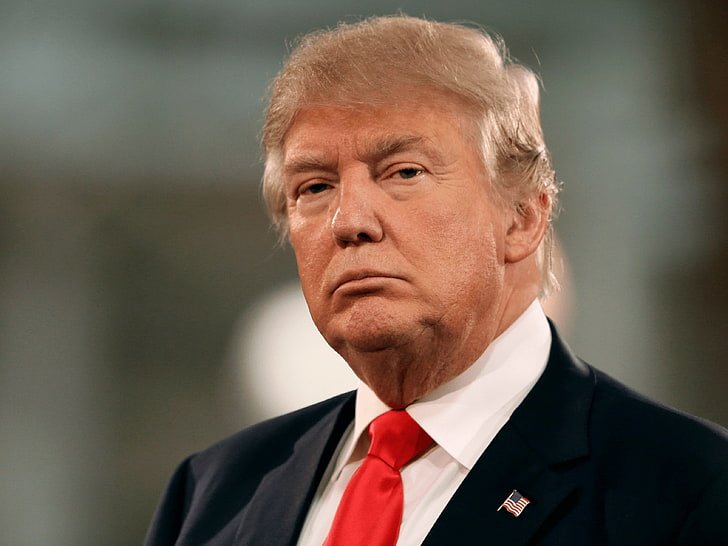Introduction:
Donald Trump entered the White House with a bold promise to put America first, and one of his top targets was China. For years, Donald Trump criticized what he called unfair trade practices that hurt American workers and businesses. Determined to change the game, Donald Trump launched a high-stakes trade war with China, using tariffs and tough negotiation to push for a better deal. His aggressive strategy faced criticism and praise alike, but it eventually led to a long-awaited trade victory. This article explores how He managed to secure that win, what it involved, and how it impacted U.S.-China relations and his presidency.
1. Trump’s Pursuit of a China Trade Victory
From the very start of his presidency, Donald Trump made it clear that fixing what he called “unfair” trade deals was one of his top priorities. Nowhere was this more evident than in his approach to China. He often spoke about the massive trade deficit the U.S. had with China, and he promised to bring jobs back to America. The “Trump China trade deal” became a defining issue, shaping both his economic policy and his global strategy.
2. Strategic Moves Behind the Trade Deal
His strategy in dealing with China was anything but conventional. Instead of relying on quiet diplomacy, he used public pressure, tariffs, and strong rhetoric to gain leverage. His administration imposed tariffs on hundreds of billions of dollars worth of Chinese goods, aiming to push China to the negotiation table. These tariffs, while controversial, were central to Trump’s plan and kept the pressure high.
3. The Role of Key Negotiators in the Process
A major part of this trade victory came down to the people behind the scenes. U.S. Trade Representative Robert Lighthizer and Treasury Secretary Steven Munching played key roles in holding talks with Chinese officials. Their experience, patience, and tough negotiating tactics helped shape the framework of what would eventually become the “Phase One” trade deal between the U.S. and China.
4. Sending the Serious People: A Tactical Shift
Early talks between the U.S. and China were often rocky and lacked focus. But as pressure built, the Trump administration shifted gears and brought in more experienced, disciplined negotiators. This was what insiders referred to as “sending the serious people.” It marked a turning point in the trade talks, showing that the U.S. was now fully committed to securing meaningful outcomes—not just symbolic agreements.
5. Breaking Down the Deal: What Trump Achieved
The “Phase One” trade deal, signed in January 2020, was a major milestone. Under this agreement, China committed to buying an additional $200 billion worth of American goods and services over two years. This included products from the agriculture, manufacturing, and energy sectors. In return, the U.S. agreed to reduce some tariffs. While not a complete resolution to the trade war, the deal was hailed as a significant win for the Trump’s administration.
6. China’s Concessions and Their Significance
China’s agreement to boost purchases of U.S. goods was more than a financial promise—it was a symbolic gesture. It showed that the pressure campaign had worked to some extent. China also made commitments to better protect intellectual property, stop forced technology transfers, and improve transparency in foreign exchange practices. These were long-standing U.S. concerns and addressing them marked real progress.
7. The New Reality of U.S.-China Trade Relations
Even with the Phase One deal, tensions didn’t completely disappear. The broader U.S.-China trade war created a “new reality” where both nations began to rethink their dependency on each other. Supply chains started to shift. Businesses sought alternatives outside China. While the deal brought temporary relief, it also cemented a more competitive and cautious relationship between the world’s two largest economies.
8. Political and Economic Impact on Trump’s Presidency
The China trade victory was a critical talking point for him, especially heading into the 2020 election. It allowed him to say he followed through on a major campaign promise and stood up to China in a way past presidents hadn’t. Economically, the deal helped stabilize markets and gave American farmers and manufacturers hope. Politically, it was framed as a win for “America First” policies.
Conclusion
His path to securing a trade deal with China was anything but smooth, but in the end, it gave him the boost he needed. Through a mix of pressure, strategic negotiation, and public messaging, the Trump China trade victory became one of the defining achievements of his presidency. While challenges remain in U.S.-China relations, this deal reshaped global trade dynamics and left a lasting mark on history.
FAQs About Donald Trump
1. Who is Donald Trump?
He is an American businessman, television personality, and politician who served as the 45th President of the United States from 2017 to 2021.
2. What is Donald Trump’s net worth?
His net worth fluctuates, but as of recent estimates, it is believed to be in the billions, largely from real estate and branding ventures.
3. What political party does Donald Trump belong to?
Donald Trump is a member of the Republican Party.
4. What were Donald Trump’s major accomplishments as president?
Some of Trump’s notable achievements include tax reform, criminal justice reform, deregulation, a strong pre-COVID economy, and renegotiating trade deals such as the USMCA and the Phase One China trade deal.
5. Why was Donald Trump impeached?
Donald Trump was impeached twice by the House of Representatives—first in 2019 over abuse of power and obstruction of Congress, and again in 2021 for incitement of insurrection. He was acquitted both times by the Senate.




